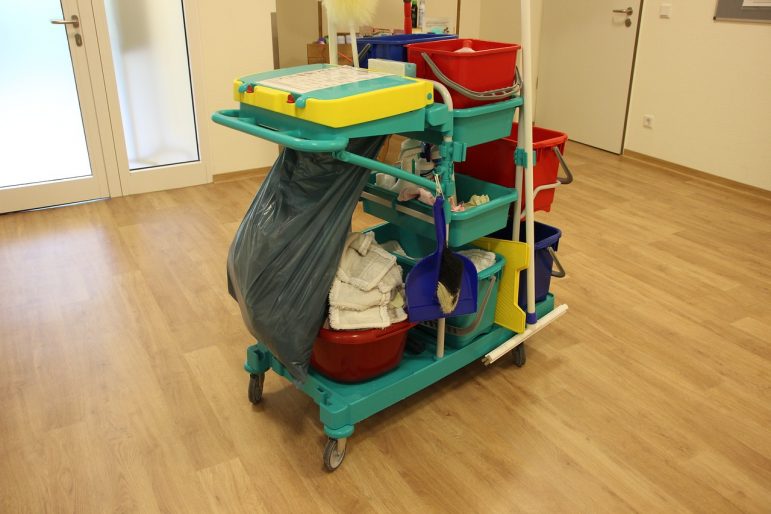When it comes to cleaning and disinfection, diligence and vigilance are key. A study recently published in American Journal of Infection Control (AJIC) highlighted the severe consequences that carelessness, such as failing to empty and change mop water regularly, can have.
Failure to adhere to recommended disinfection protocols and manufacturer’s instructions for use of a hospital-grade disinfectant led to the contamination of high-touch surfaces, found the study.
High-touch surfaces including handrails and equipment controls are among the most contaminated in care facilities, and floors are also often a primary spreader of infection. These surfaces must all be cleaned regularly and sufficiently to avoid spreading pathogens responsible for healthcare-associated (HAI) infections.
Another study found that large amounts of bacteria that had not been present pre-cleaning were found on surfaces that had recently been cleaned, as the cleaning had not sufficiently followed manufacturers’ recommendations, such as emptying and drying the bucket between uses.
Quaternary ammonium compounds are widely used as disinfectants and are considered to be safe and effective cleaning agents, but they may become contaminated with HAI pathogens. In this study, “If contamination of the disinfectant had not been identified, continued contamination of high-touch surfaces might have resulted in contamination of the hands of healthcare personnel or acquisition of the pathogens by patients,” said study author John M. Boyce, MD.
“As a result of the investigation, the responsible housekeeper received re-education of the need to follow manufacturer’s recommended instructions for use, and the need for buckets to be cleaned at appropriate intervals and allowed to dry before new disinfectant is added,” Boyce said. He added that the investigators “were surprised by the number of Gram-negative bacteria that remained viable in the contaminated disinfectant; although, a few previous studies have identified similar levels of contamination.”
Other malpractices that result in contamination include the use of over-diluted solutions, contaminated water to dilute concentrated solutions, and outdated products. For example, HAIs by contamination or improper sterilization occurred recently at a Georgia Veterans Affairs hospital, where thousands of patients were potentially exposed to HIV and hepatitis.









